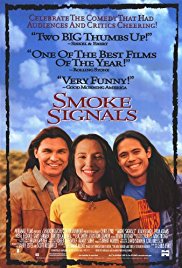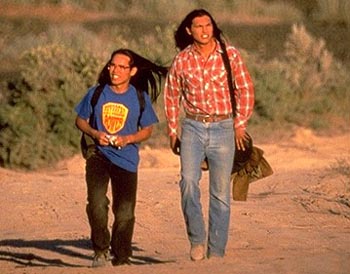After the film has been watched have the class read the poem How Do We Forgive Our Fathers? by Dick Lourie which is heard in voiceover at the end of the film. Then ask the following question:
1. The poem was recited by Thomas in voiceover at the end of the film as Victor rages and finally assumes a fetal position on the bridge. It clearly relates to the dominant theme of the story. There is a question asked at the end of the poem. From Victor’s point of view, what is the answer to this question?
Suggested Response:
Answers will vary. All thoughtful answers should be acceptable. Some may suggest that what is left is an individual with his own identity ready to go on with his life reborn and without the burden of anger and resentment that is relieved by forgiving those who have caused offense. People who forgive others for grievous offenses often say that by releasing anger the act of forgiving allows the person who forgives to move on. Others may suggest that what is left is forgiving ourselves for our anger at our fathers or for something offense.
2. In the voiceover at the film’s beginning, Thomas says: “There are some children who are pillars of flame that burn everything they touch and there are some children who are just pillars of ash that fall apart when you touch them. Me and Victor, we were children born of flame and ash.” Thomas is using metaphors, pillars of flame and ash, to describe character traits. What do you see in Thomas and Victor that show them to be as Thomas has described?
Suggested Response:
Thomas is like flame in his brutal honesty; he is like ash in his gentle, soft nature. Victor is like flame in his anger; he is like ash in his underlying pain. Students may choose other ways to express this. Anything that captures the sense of the metaphor is a valuable response.
3. In a flashback Suzy and Arnold share the worst things they have ever done. Arnold gives no more details than that he “broke three hearts, too.” To what is he referring?
Suggested Response:
Arnold may be referring to the fire in which Thomas’ parents died; hearts broken that day could be his own, Thomas’ grandmother’s and Thomas’. Arnold could be referring to the fact that he abandoned his family, breaking the hearts of his wife, his son and himself.
4. Thomas, the film’s narrator, is a storyteller, an individual responsible for carrying on the oral tradition of the tribe. What stories does he tell that seem to carry more meaning than what appears on the surface?
Suggested Response:
Answers will vary. Thomas begins the film by telling about the fire in which his parents were killed; he tells about how Arnold took him to Denny’s for breakfast; he tells about how Arnold was once a hippy arrested at an anti-war demonstration. In each story, Thomas is addressing the character of Arnold, enabling Victor to see his father in a new, more comprehensive and compassionate light.




